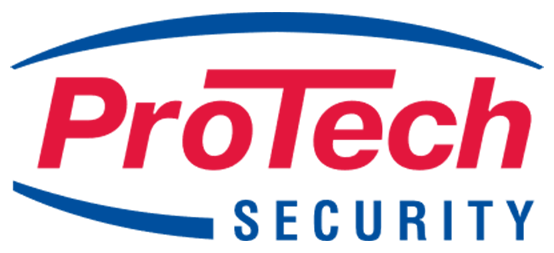Corporations are highly vulnerable to several types of physical and cyber attacks, including burglaries, both physical and intellectual property theft, vandalism, hacking, and more. According to statistics from the Federal Bureau of Investigation and the U.S. Department of Justice, 2.5 million burglaries are reported annually in the U.S., 34% of which affect businesses. Also, in a recent Gartner study, 51% of the respondents had experienced a cyber-security risk incident in the past two years.
Therefore, it is becoming increasingly important each year for businesses to enact comprehensive corporate security strategies to protect their people and property. Below are corporate security strategies, tips, and best practices that you can use to protect your business, no matter your scope, locale, or industry.
5 Corporate Security Strategies Your Business Should Implement
1. Incorporating Security Policies Into Everyday Operations at Your Business
From accidents to burglaries, cybercrimes, and beyond, corporations face numerous threats to their safety and security. Strict safety and security policies can help your business uphold its responsibility to create a safe and secure environment for both employees and outside visitors.
Every business function should be considered when you and your leadership team are analyzing which policies to enact, as each function can have its own unique security threats and challenges. Safety and security policies should also cover both physical and virtual environments, considering cybersecurity concerns like keeping critical data, software, and equipment secure.
Two initial steps are integral in the planning process for effective safety and security practices — (1) creating a checklist of all potential threats, like different potential natural disasters, both physical and cyber crimes, and more; and (2) conducting a safety audit to consider all potential risks.
Safety and security policies that can help to create a robust overall corporate security strategy include:
- Access control systems to give real-time insight on who is inside your building, when they entered, and how
- A reporting system for both employees and customers to use to call out potential threats
- Emergency planning for all potential incidents like natural disasters or criminal activity on your premises
- Periodic employee training on best practices and procedures
- Timely safety audits and inspections to identify any potential gaps
2. Installing a Robust Commercial Video Surveillance System
Commercial video surveillance can assist greatly in protecting your people and property. With more than 70 million surveillance cameras being used by businesses in the U.S. today, businesses without sophisticated surveillance solutions are more at risk of being targeted for crimes like vandalism or burglary.
Using advanced technology, recording methods, and storage options, modern surveillance cameras are smaller, more dependable, and extremely cost-efficient when compared to previous iterations. Commercial video surveillance systems pose a variety of benefits for your business, such as:
- Prevention of criminal behavior like theft and robbery
- Real-time video recording
- 360-degree security coverage, giving you insight into even the most isolated areas of your property
All potentially vulnerable areas on your business’ grounds should be covered by surveillance. Some locations that companies typically install surveillance cameras in are:
- Entry points like doors and windows
- Special areas that may be targeted’ like those housing expensive equipment, electronics, critical documents, etcetera
- Point of sale (POS) like cash registers
- Common walkways throughout the building and outside of it
- Parking lots to enhance employee safety upon arrival and when leaving the workplace
3. Finding a Custom Access Control System That Keeps Your Building Secure
Monitor who enters or leaves your property — and when — with secure access control. Another cost-efficient and reliable solution, advanced access control systems can allow access to authorized personnel quickly and conveniently while helping to prevent intruders from entering the building or specified restricted areas.
Benefits of commercial access control include:
- Ease of access for employees and authorized visitors
- Reducing costs for traditional locks and security personnel
- Protecting higher risk or value areas by reserving access only to specific personnel
- Allowing for 24×7 building access to employees and leaders if applicable
- More flexibility for employee work times without additional coordination required
- Greater security for organizational data
- Easy implementation across different locations and buildings
- Thorough compliance with industry security standards
The components of an access control system can include access control panels and servers, biometric systems, contactless readers, electric locks, video surveillance on common entry points, sign-in sheets, panic alarms, audio intrusion detection, and more. Corporate access control systems are often easy to use and require little to no training. They are often used to protect areas like entrances and exits, IT rooms, storage areas, and file cabinets.
4. Implementing Emergency and Evacuation Drills
Prepare your employees for worst-case and disaster scenarios sooner rather than later to keep them protected and prepared in the case of an emergency. From natural disasters to criminal activity, a well-thought-out plan should be in place, and all employees should be well educated and practiced in how to react.
Drills should be scheduled throughout the year to ensure personnel readiness in any situation requiring an emergency response or evacuation. Start by performing a thorough risk assessment considering all potential threats and their likelihood of causing injury or damage. Keep in mind potential risks including, but not limited to:
- Fires
- Natural disasters
- Power failures
- Chemical leaks and spills
- Injuries
- Community evacuation situations
- Explosions and implosions
- Civil disturbances
Once a risk assessment has been completed, plan thorough emergency and evacuation training and drills, so that all personnel understands:
- All potential emergencies and incidents requiring evacuation
- Presence and location of emergency management equipment, like fire extinguishers, water supplies, and more
- Evacuation techniques for when traditional exits are blocked, such as slides, ropes, assembly methods, and more
- How emergency communications should proceed, both internally (like whom to notify, how, and when) and externally (like who should communicate with emergency response teams, how, and when)
In order to have effective emergency protocols and drills in place, you will need to:
- Get buy-in from all teams and stakeholders
- Communicate all plans clearly
- Set measurable goals for drills (I.e., time to evacuate the property completely.)
- Clearly define responsibilities, such as appointing an emergency manager and authorized emergency response persons among your team members
- Plan drills regularly and repeatedly, like fire drills once every month or quarter
5. Implementing Comprehensive Corporate Security Strategies & Systems
As discussed in every section above, having a comprehensive security system helps you to:
- Ensure the safety of your people and property
- Monitor employees and visitors
- Prevent both physical and cyber crimes
- Minimize damage from emergencies and disasters
Most advanced commercial security systems are compromised of these four main components:
- Access control
- Remote monitoring
- Commercial video surveillance
- A fire safety system
At Viking Security, we have a strong commitment to keeping both people and property safe at businesses and government facilities of all sizes across Central Florida. Learn more about our expertise across solutions like advanced video surveillance, access control, intrusion detection, and more by reaching out to us today.



